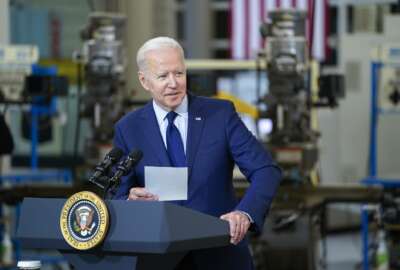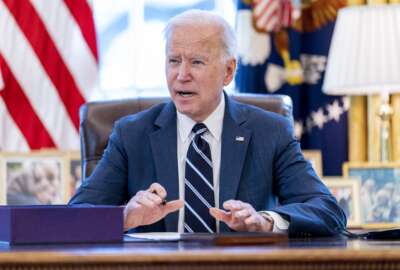For FEBs, local efforts snowball into broader workforce successes
During 2022, Federal Executive Boards across the country created millions of dollars in cost savings and helped raise $33.9 million for charity organizations...
Of the nearly 2 million employees working for the federal government, about 85% are stationed outside the nation’s capital — creating the need for an effective, collaborative network among agency departments and offices nationwide.
That’s where Federal Executive Boards, or FEBs, come in. The program, founded in 1961 during the Kennedy administration, helps coordinate and communicate among agency headquarters and field offices, for events like snow days and other types of emergencies.
For Anita Spinner, the Office of Personnel Management’s director of the FEB program, the message of communication has remained consistent over the now more than six decades the program has existed.
“The boards really ensure that the senior leaders and those federal employees have a way to communicate and share information,” Spinner said in an interview with Federal News Network.
But the 28 FEBs across the country do much more than coordinate for emergency events. They also manage mentoring and training programs, Alternative Dispute Resolutions (ADRs) and support the annual federal employee charity fundraiser, the Combined Federal Campaign (CFC) — just to name a few. Each FEB operates as part of the larger network, but can also maintain specific focuses, dependent on the needs of individual communities.
“That’s what I love about FEBs,” Spinner said. “We say it’s a national network of local connections. What are the needs that have been identified by the senior leaders for those respective employees?”
Over the last year, individual FEBs have focused on, for example, leadership development training, federal retirement training, hosting food and community supply drives and supporting local veteran communities, according to the latest annual report on FEBs, published in May. That’s in addition to broader tasks of assessing supporting federal workforce development, emergency preparedness and community outreach.
During 2022, FEBs provided training opportunities to 18,000 federal employees, creating a cost avoidance of over $6.6 million, the report said. Additionally, FEBs helped avoid over $9.8 million in costs to the government through FEB-sponsored ADR and shared neutrals programs, helping to settle more than 208 federal employee workplace dispute cases. FEBs also helped organize and execute the CFC for 2022, raising $33.9 million for charity organizations nationwide.
The work involved in running FEBs is currently volunteer based.
“For a 61-year-old program, because the value of FEBs has been seen nationwide, departments and agencies have volunteered to staff the program,” Spinner said.
But the Biden administration is looking to change that. In its fiscal 2023 budget, as well as the 2024 budget proposal, the White House called for “stable and permanent funding” and a clearer governance structure among OPM, the Office of Management and Budget and the General Services Administration — the three agencies that oversee the program.
The program has seen some more broadly shifting priorities in recent years, too. FEBs typically hold a forward-looking role to help coordinate efforts, but the pandemic has shifted the mindset, at least to some extent. FEBs had to work to disseminate resources and guidance throughout the pandemic, as well as now transitioning and maintaining a hybrid work environment.
“Despite maybe having to shift to virtual platforms, they’ve still been able to recognize federal employees. And that’s really our goal with everything we do — to really highlight what it means to be a true federal servant and how it can impact the nation,” Spinner said.
At its core, the FEB program is about interagency connections, Spinner said.
“Through interagency connections and working together, FEBs have been able to share resources, break down those silos and be able to help accomplish their agency missions as well,” Spinner said. “Working together, as respective agencies in those locations, has helped to achieve that.”
Copyright © 2025 Federal News Network. All rights reserved. This website is not intended for users located within the European Economic Area.
Drew Friedman is a workforce, pay and benefits reporter for Federal News Network.
Follow @dfriedmanWFED






